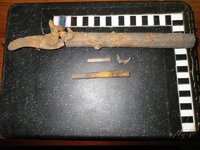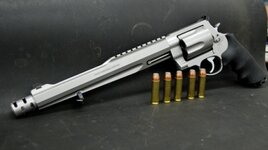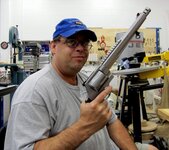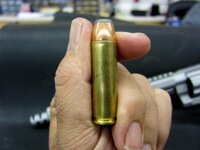Monty
Group Buy Coordinator
My son in law works for a pipeline company. They are currently laying a line through the San Jacinto Battleground just outside of Houston. The crew uncovered this circa 1836 flint lock gun...referred to as the multimillion dollar gun because pipeline construction was stopped and they now have to reroute the line. The gun has been turned over to the Historical Society.




